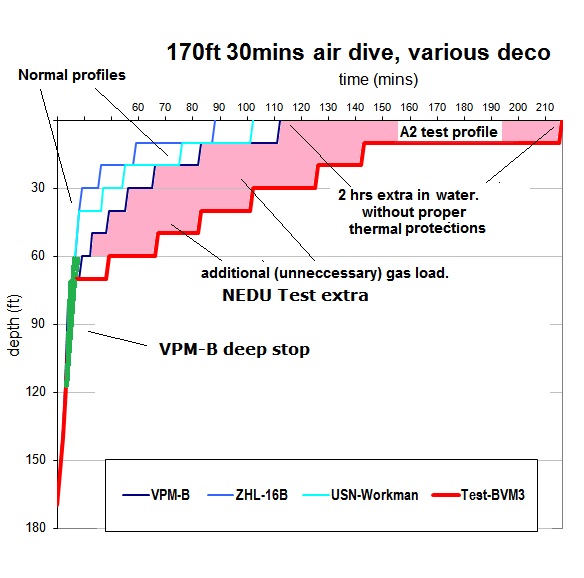- Messages
- 17,327
- Reaction score
- 13,749
- # of dives
- 100 - 199
Let's see if I've got it right. This is how I - neither a decompression scientist nor a tech diver - understand the facts:
Is this a decent summary?
- Bubble models generally emphasize deeper stops at the cost of shallow stops, so for the same decompression stop time, a bubble model will distribute the deco time at greater depths compared to a dissolved gas model
- The NEDU study investigated two different decompression profiles with the same total run time, but with a different distribution of shallow vs deep stops
- The NEDU study showed quite unequivocally that the deep stop preference profile lead to significantly more incidents of DCS than a shallow stop profile did
- One of the most active participants in this thread (let's call them "A") has a clear financial interest in one of the most widespread bubble models
- Two of the most active participants in this thread (let's call them "B" and "C") are public employees; one is a University faculty member, the other is employed by the US Navy
- A is extremely critical to conclusions drawn from the NEDU study (i.e. that redistributing stops from shallow to deep depths is not a good idea and will lead to a higher risk of DCS)
- A accuses B for not being objective due to... I'm not quite sure of what. And for misrepresenting facts, which is about as much anathema in academia as taking bribes from mafia bosses is among police officers.
- B accuses A for outright obfuscation, claiming that A is spouting... for want of a better term, let's use the one described in Harry G. Frankfurt's fairly well-known essay.
Is this a decent summary?






